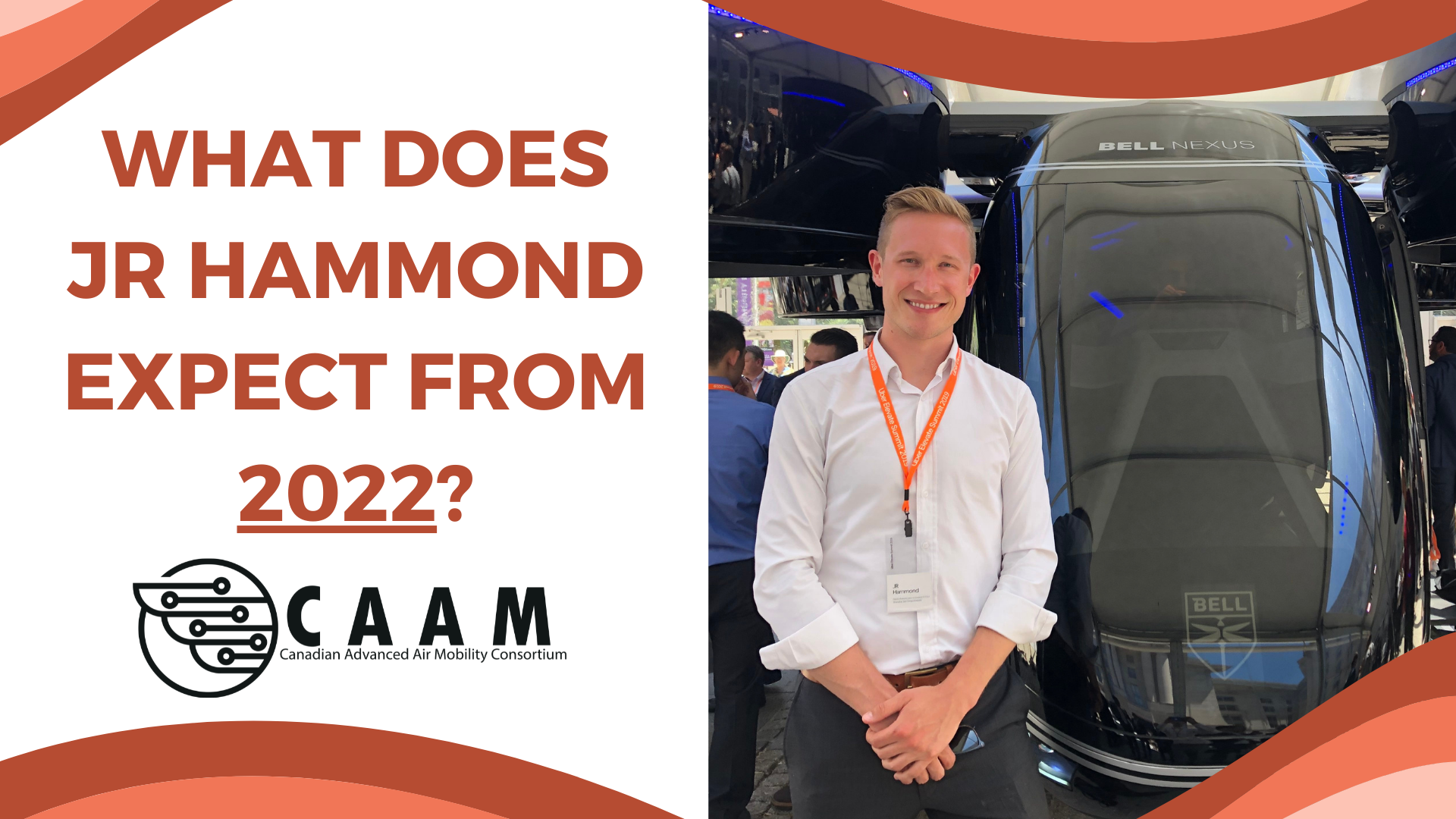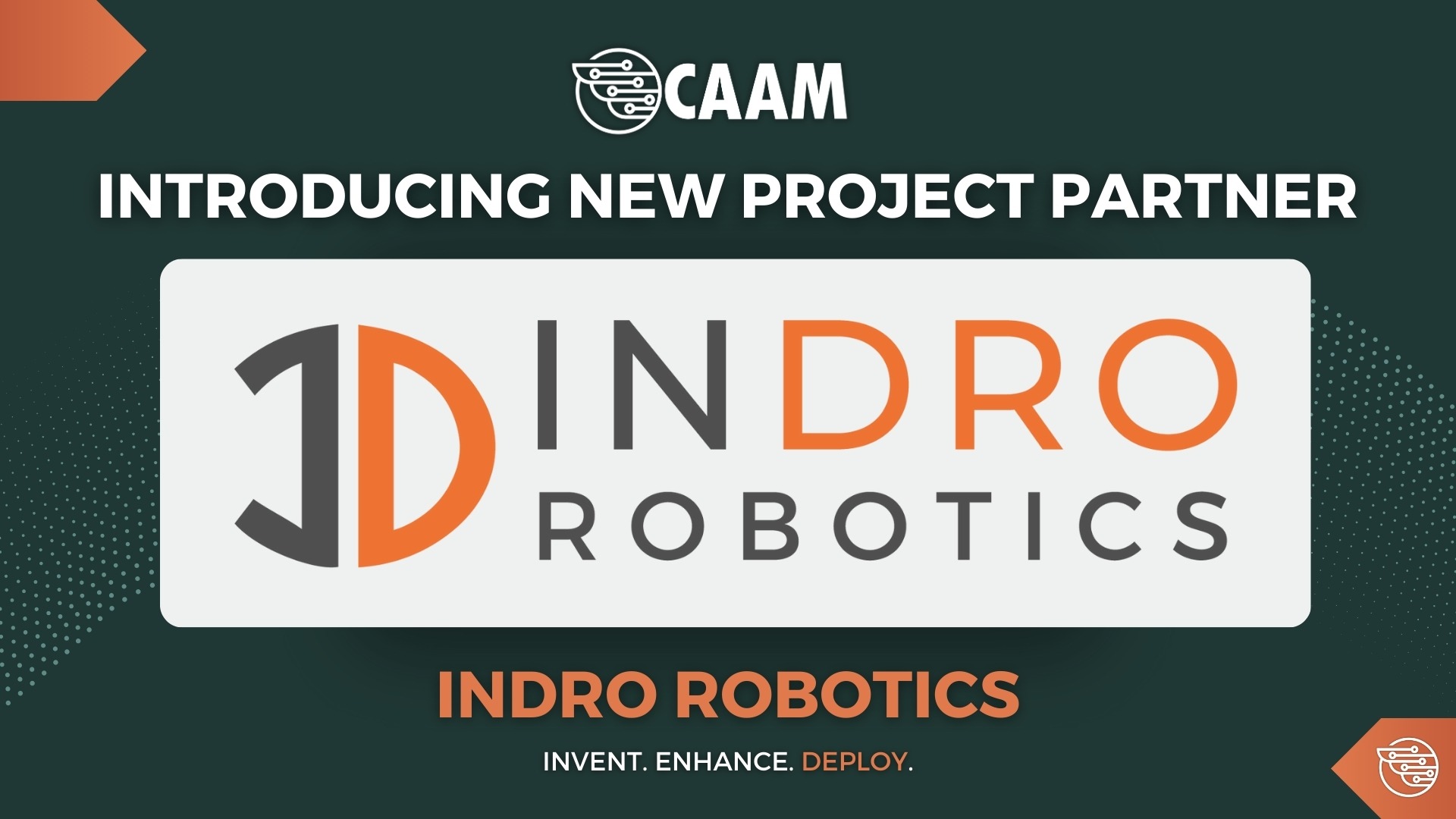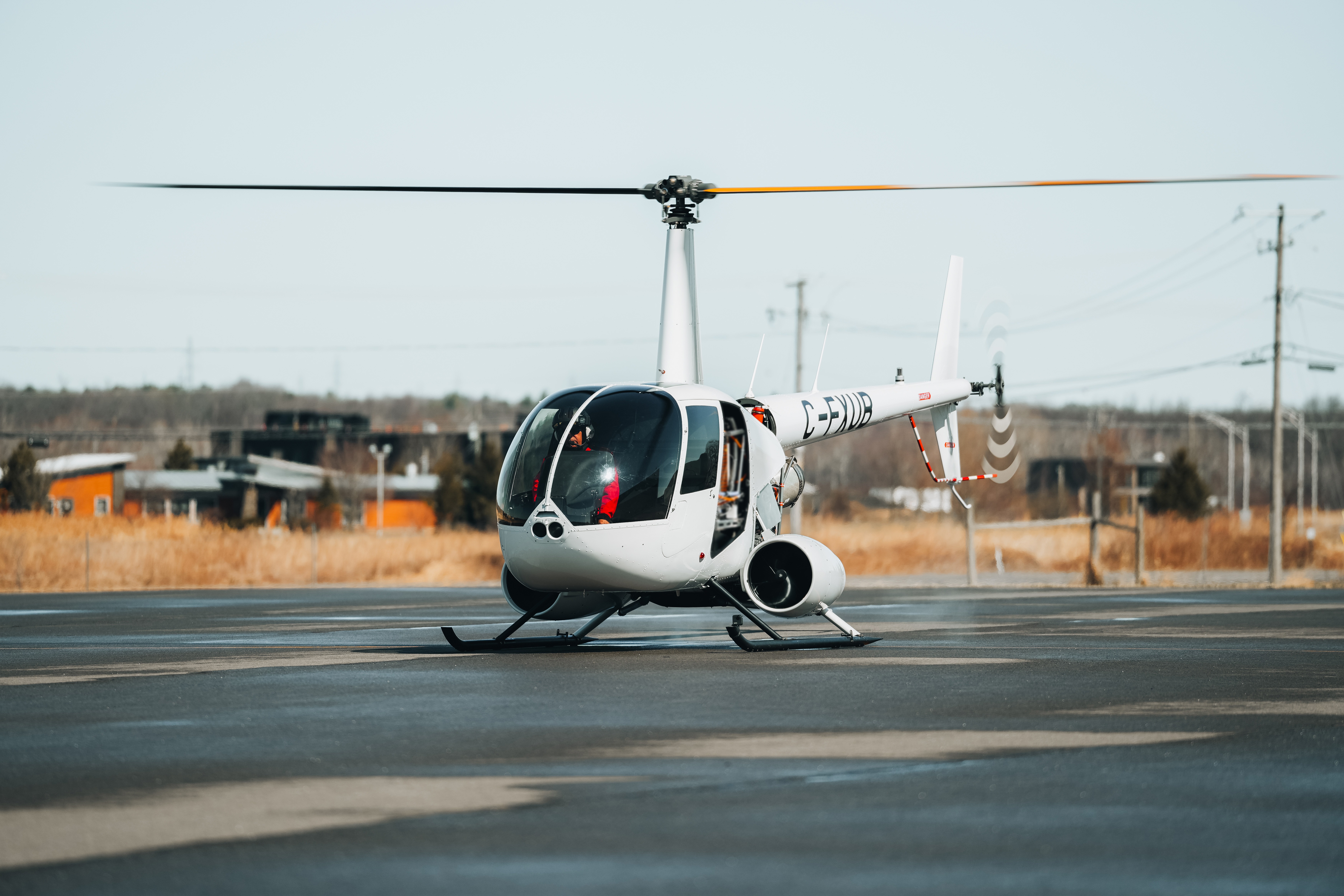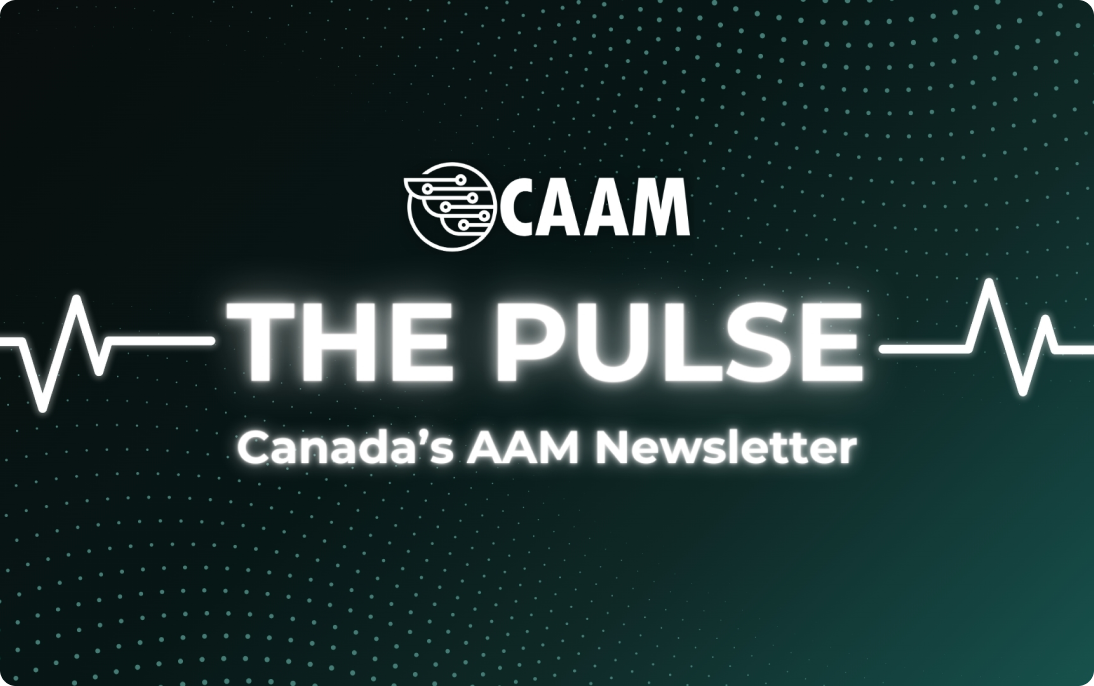
Undoubtedly, 2021 was a year of learning for the Canadian Advanced Air Mobility Consortium, CAAM, and JR Hammond (Executive Director). Last year, CAAM celebrated its first full year of activities. As such, the Consortium got many things right but also committed some mistakes. With that in mind, I sat down with JR to talk about the future while never forgetting the past.
One of CAAM’s pillars is “leaning into vulnerability,” that’s why JR doesn’t shy away from talking about the mistakes committed and the lessons learned. It’s refreshing to hear his optimistic tone when dealing with challenging topics. The positivity of facing the problems and not letting them get the best of him is inspiring. That’s especially true when JR says many of the mistakes were necessary to learn where CAAM can succeed.
But more than looking at last year’s lessons, JR talked a lot about what he believes the Advanced Air Mobility industry will look like in 2022. “It’ll be more grounded because it’s more mature, and this maturity can lead to more significant accomplishments like, for example, some demonstrations flights that link themselves to everyday usability in the near future.” JR also emphasizes Canada’s readiness to lead the worldwide AAM industry because of its united front.
And finally, JR talked a lot about how CAAM will increase its advocacy for environmental, diversity, equity, and inclusion in the AAM industry. He also shared a special message for three of CAAM’s biggest partners while also giving some spoilers of how the Consortium will operate in 2022.
If you are curious about either AAM or CAAM’s future, this interview is for you. And if you want to learn to see the glass half-full and how obstacles are exciting and motivational, I can’t think of a better teacher than JR.
JR’s expectations for 2022
What do you expect AAM will look like in 2022?
Reality checking. Remaining optimistic for what can be done in Advanced Air Mobility yet grounding ourselves in what and where the market is at today—this is what I expect from AAM in 2022. There’ll surely be a realignment on what is feasible for AAM, where it can be applied, and not just this overall euphoria of AAM solving all transportation problems.
So, to me, reality checking and realignment are the important words for AAM in 2022.
Do you think we will see more companies entering the AAM industry? Or will we stay with the same players we had in 2021?
I predict there will be the equivalent amount or fewer companies in AAM this year. Even though the expectations continue to be raised for what AAM companies can do this year, the reality of how long this work will take will force companies to shy away from AAM. If anything, companies will run out of steam or merge. That’s why I cannot see the 2021 growth continuing in 2022.
What do you think CAAM will look like in 2022? In terms of where is CAAM starting, where it wants to finish the year, and what it’ll do to get there?
Number one, CAAM will focus on tangibility in the Advanced Air Mobility market. We need a demonstration flight to bring our advocacy for AAM into the real world, not just talking about it. So tangibility is the number one place that I see CAAM at the end of 2022.
Number two is honing in on our efforts to advocate for environmental, diversity, equity, and inclusion in the future of AAM.
Joby has an AAM flight scheduled for this year. Do you think this kind of step will help bring the tangibility CAAM is looking for?
Yes! I want Joby, or something similar, here in Canada! I want it to be not only a demonstration flight at some test range in Northern Manitoba but linked to a specific use case here in Vancouver, Toronto, Montréal, or any Canadian city.
With their recent partnership with Blade, Helijet has plans that perfectly align with the tangibility I want for CAAM in 2022. It’s not just their partnership for the future of aviation; it’s a commitment to a more equitable, more sustainable, and revenue-generating AAM industry.
What did CAAM learn last year, and how will it use the lessons to keep growing?
At CAAM, we learned that we can do so many different things to help the AAM industry. As an organization, we learned that we could tap into all of these benefits, and that’s what we tested out last year. We were trying to be everything for everybody in the AAM industry. Now, we’ve learned that while those are still important, we need to prioritize these fringe benefits.
Still, there are some things that we can do that nobody else is well set up to do here in Canada. CAAM will continue to act as a catalyst for AAM projects across the country. However, our strategic bandwidth will focus on transitioning the technical work to our industry and government partners. We intend to put more energy into helping organizations orient themselves to the AAM industry and see if there are ways we can help them unlock funds to accelerate their progress towards a net-zero aviation future. These align with our advocacy for moving the industry closer to net-zero emissions and allowing for much more focus and effort in getting into those operations.
It’s almost like CAAM is trying to do less but do better.
Very much so! You know, Chris [Howe] (CAAM’s Lead Operating Officer) and I were talking about what we realized last year, as a start-up organization, is that we had to test out everything, we had to go and be everything for everybody because we didn’t know what we were good at. We didn’t know what this industry needed, but now we take all the learning and data from an entire year, and we say, “Hey, those are still important, but this is what we can do really well.” And we also learned that we need to ask others to succeed where we don’t do so well.
2021 sounds like a Year Zero for CAAM. In terms of discovering, and now CAAM is moving to Year One, having a better understanding of what it can and can’t do.
Exactly. And we are meeting the industry where it is at today. That’s the critical part of it. I love that, Year Zero on the discovery side.
What are you most eager to see in 2022? Is a company increasing its investment in the AAM industry? A flight to give tangibility? Or is it something else?
There are three things I’m most excited about in 2022: number one, the tangible demonstration flight—that’s an easy one.
Number two is the ecosystem growing beyond CAAM. What does that mean? Projects and engagement, happening without us having to facilitate everything. That is like the definition of success because that would demonstrate that we succeeded in creating an AAM ecosystem within Canada. If we don’t have to touch everything and start everything, it actually grows beyond us, which is what we want. If we can just be the matchmaker, and the companies we introduce do a project together, that’s success for CAAM.
And number three, I’m really eager to see all of our advocacy work in environmental, diversity, equity, and inclusion not be just our voice but start to become the AAM industry’s voice. So other people, other companies are interpreting and internalizing our advocacy work, and they’re becoming the champions. How nice would that be if CAAM is setting all of those values on environmental, diversity, equity, and inclusion, and then, let’s say, Helijet comes and say, “We’re aligned with all those CAAM’s goals, values, and metrics, and here’s how we’re implementing them on our operations.”
How it would feel if, as you said, Helijet came at you and said, “We changed this, this, and that, to be more aligned with CAAM values, and because of CAAM’s advocacy, we now are a better company.”
That’s what success looks like for me! Success to me is really moving beyond us, beyond CAAM and becoming part of the ecosystem.
Do you want to add anything else?
For the AAM industry, I want to emphasize that Canada continues to be a united front in moving Advanced Air Mobility forward. We’re still one of the only countries on the planet that is linked and organized to move this industry together for all of those areas we’re advocating—environmental, diversity, equity, and inclusion.
And for CAAM, I’m building upon this language that I’m really falling in loving more and more, of being that optimistic voice of where we need to go on AAM, but also linking and grounding where the market and the industry find themselves today. That is going to be an excellent theme for this year and allow us to bring more important companies, stakeholders, and Governments along with us, rather than just being this “in the cloud” side where we can’t talk with the WestJets, or Helijets, because we’re too far away from the ground; this will also allow us to bring the market closer to where we want and believe they should be regarding AAM.
I believe that by being that optimistic voice, while still grounding ourselves in reality, we’ll have a higher probability of being successful.
Do you have a specific message for the partners that have been with CAAM since day one and helped CAAM learn so much in 2021?
I’m really excited to keep our work with Helijet going into 2022 because of their continued commitment to a better future in Advanced Air Mobility. That plays on to their partnership with Blade, expansions of their operations, and commitment to a better future for Advanced Air Mobility.
And I’m also very eager to keep working with the National Research Council. As we integrate more of our work with the Federal Government, having them as the founding partner, the chairperson of our National Board, and the importance of their support as we advance makes me sure that the connection between CAAM and the National Research Council is only going to get stronger and stronger.
Finally, I’m often thinking about how we move the tireless advocacy work of organizations like Iskwew Air beyond them and farther into the fabric of this new industry. Teara Fraser is a great champion of the future I want to be a part of, and this year will be a failure if we only talk about the changes we hope for and don’t take the action needed to move this industry forward.
By Giovani Izidorio Cesconetto



